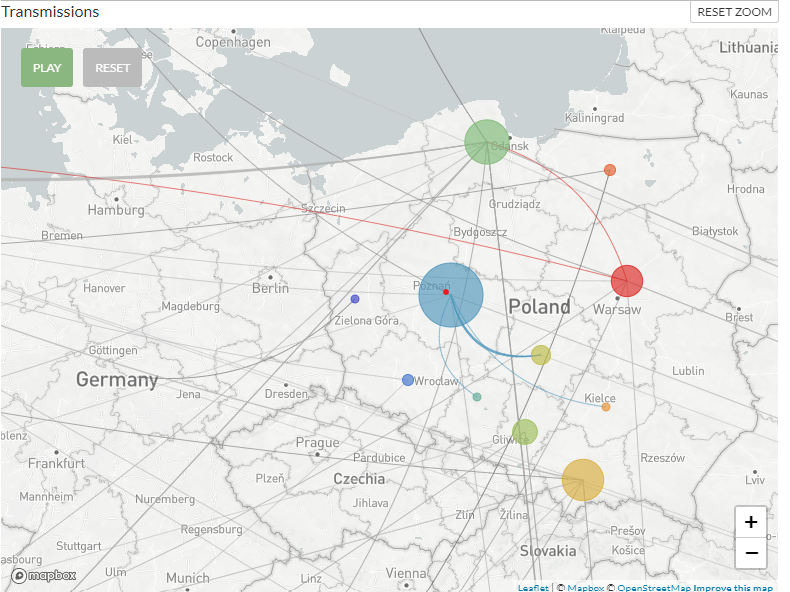
During SARS-CoV-2 infection, like any other RNA virus, it multiplies, which leads to the accumulation of random mutations in its genome. As individuals transmit, this mutation pattern spreads. Thanks to this phenomenon, it is possible to track the spread of the pathogen in time and space.
Such application of genomic pandemic map is able to tracks SARS-CoV-2 evolution. Data generated from sequencing of viral genetic material allow to build an interactive map. The wide range of functions, the application provides information on the rate of accumulation of mutations, the dynamics of their increment over time and geographic distribution. For a better context in assessing the development of the pandemic in Poland, data on the genetic variation of SARS-CoV-2 from other European countries are also presented. The genomic map of the pandemic is continuously expanded to include the next genomic sequences of the virus in order to build the most complete picture of the pandemic development. Ultimately, the map will contain approximately 3,000 complete SARS-CoV-2 genomes.
Structure and composition of SARS-CoV-2 quasi-species
Since the beginning of the COVID-19 pandemic, extensive scientific research has been undertaken to understand the new pathogen SARS-CoV-2. High-throughput genomic research is at the forefront. However, current approaches have not yet comprehensively studied the evolution of the virus within the human body. However, it is known that RNA viruses exist in infected organisms as quasi-species, ie complex and dynamic populations of variants that play a key role in the adaptation of these pathogens to changing environments. In addition, studies with other RNA viruses (e.g. HCV or polio) have shown that the quasi-species structure may be related to the outcome of the therapy.
So far, little is known about the importance of quasi-species in the context of SARS-CoV-2 infection. To solve this problem, we use the data collected on the COVID-19 Data Portal, and with their help we reconstruct the structure of SARS-CoV-2 quasi-species and study how it evolves in the human body and what factors and how they influence it.
https://nextstrain.covidhub.psnc.pl/ncov/poland